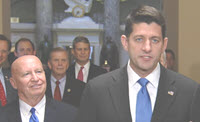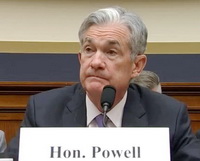A new federal “Opportunity Zones” investment program – and its potential to boost job creation, entrepreneurship, and economic development in low-income communities – is the focus of a July 16 GlobeSt.com interview with Real Estate Roundtable President & CEO Jeffrey DeBoer and Roundtable SVP and Counsel Ryan McCormick. With implementation guidance about the program expected soon from the U.S. Department of the Treasury, the article highlights the major tax considerations and regulatory questions for real estate, many of which are discussed in greater detail in The Roundtable’s June 28 Opportunity Zone comment letter.
 |
Roundtable President & CEO Jeffrey DeBoer, right, and Roundtable SVP and Counsel Ryan McCormick, left, discussed the new federal "Opportunity Zones" investment program in a July 16 GlobeSt.com interview. |
The Roundtable Tax Policy Advisory Committee (TPAC) recently convened a panel on Opportunity Zones that included the tax counsel for Senator Tim Scott (R-SC), the original author and sponsor of Opportunity Zone legislation. TPAC’s Opportunity Zone Working Group will continue to provide insight into how the industry can help the program fulfill its ambitious objective of stimulating economic development and job creation. (Roundtable Comment Letter, June 28)
House Republican leaders aim to vote on “Tax Reform 2.0” legislation in September, followed by a tax technical corrections bill after the November mid-term elections.
 |
House Speaker Paul Ryan (R-WI), right, and House Ways and Means Committee Chairman Kevin Brady (R-TX), left, pledged action on Tax Reform 2.0. Ryan said taxwriters are compiling a list of "glitches and issues" in the new tax law that could be in a technical corrections bill. |
Among the technical corrections needed is a drafting mistake that added nearly a quarter-century to the depreciation life for qualified improvement property that has negatively affected commercial real estate development. Roundtable SVP and Counsel Ryan McCormick explained at a recent NYU tax conference that while Congress intended for qualified improvement property to receive bonus depreciation — setting the recovery period at 15 years — a drafting error put the recovery period at 39 years. “In addition to conflicting with the clear legislative intent, this result is ... antithetical to the basic direction of the underlying bill,” McCormick said. (Tax Notes, July 2 and Wall Street Journal, July 10 – "Legislative Mistake Causes Some Companies to Postpone Renovations")
In testimony before Congress this week, Federal Reserve Chairman Jerome Powell testified about interest rates and monetary policy. “With a strong job market, inflation close to our objective, and the risks to the outlook roughly balanced, the FOMC believes that – for now – the best way forward is to keep gradually raising the federal funds rate,” Powell told the Senate Banking Committee on Tuesday.
 |
In testimony before Congress this week, Federal Reserve Chairman Jerome Powell testified about interest rates and monetary policy. |
The effects of monetary policy and tax legislation on commercial real estate will be a focus of The Roundtable’s September 26 Fall Meeting in Washington, DC.